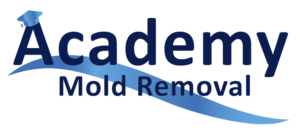Attic Mold Removal: Everything You Need to Know to Prevent and Remove Mold
September 21, 2024Attic Mold Removal: How to Know When You Need Professional Help
September 21, 2024Older homes often come with charm, character, and history, but they can also bring certain challenges, such as mold in the attic. Attics in older houses are especially vulnerable to mold growth due to outdated insulation, inadequate ventilation, and aging structures that may allow moisture to seep in. Ignoring attic mold can lead to serious health risks, structural damage, and a decline in your property’s value. Understanding the importance of attic mold removal in older homes is essential to protect your investment and maintain a safe living environment.
Why Older Homes Are Prone to Attic Mold
Several factors contribute to the susceptibility of older homes to attic mold:
- Outdated Roofing and Insulation: Roofs in older homes may have worn-out shingles or weak seals that allow water to enter. Additionally, older insulation materials may not provide adequate protection from moisture, creating the perfect environment for mold growth.
- Poor Ventilation Systems: Many older homes were built with insufficient ventilation, causing humidity to build up in attics. Proper airflow is necessary to prevent moisture accumulation and mold formation, making modern ventilation systems critical in attic mold removal.
- Structural Leaks: As homes age, cracks and gaps can develop in the roof or walls, allowing moisture to infiltrate. This steady exposure to water can create conditions ideal for mold growth in attics.
The Risks of Ignoring Attic Mold in Older Homes
Failing to address mold in the attic can have significant consequences, both financially and in terms of health. Here’s why attic mold removal should be a priority in older homes:
- Health Risks: Mold releases spores into the air that can lead to respiratory problems, allergies, and other health issues. This is particularly concerning for older homes, where attic mold may go undetected for years, increasing the risk of long-term exposure.
- Structural Damage: Mold eats away at wooden beams, insulation, and other materials commonly found in attics. Over time, this can weaken the structure of your roof and the overall integrity of your home, leading to costly repairs. Effective attic mold removal can prevent this damage from escalating.
- Decrease in Property Value: If mold becomes a persistent problem, it can negatively impact the resale value of your home. Potential buyers will see mold as a red flag, especially in older homes where mold issues are more likely. Removing attic mold promptly helps protect your investment and keeps your home’s value intact.
Steps for Attic Mold Removal in Older Homes
Tackling mold in the attic of an older home requires careful planning and attention to detail. Below are the key steps for successful attic mold removal:
- Inspect for Moisture and Leaks
Before starting the removal process, it’s essential to inspect your attic for the source of moisture. Look for roof leaks, cracks in walls, or areas with poor ventilation. Fixing these issues is crucial for preventing mold from returning after removal.
- Clean the Mold Thoroughly
Once the source of moisture is addressed, begin cleaning the affected areas. Use mold-specific cleaning products like bleach or commercial mold removers to scrub down the mold-infested surfaces. For older homes, be particularly careful with wooden beams and structural components to avoid causing further damage during attic mold removal.
- Remove Contaminated Materials
In some cases, insulation, wood, or drywall may be too damaged to clean and will need to be removed and replaced. Ensure proper disposal of mold-contaminated materials to prevent further spread of mold spores.
- Ventilate the Attic
Older homes often lack proper attic ventilation, which is a leading cause of mold growth. Install roof vents or attic fans to improve airflow and reduce moisture levels. Good ventilation is essential for preventing future mold issues after the attic mold removal process.
- Monitor for Future Mold Growth
Once the mold has been removed and the attic is properly ventilated, conduct regular inspections to monitor for any signs of moisture or mold re-growth. Consistent maintenance is key to keeping your older home mold-free.
Why Professional Mold Removal Is Often Necessary for Older Homes
While small mold problems can be handled by homeowners, older homes with extensive mold infestations often require professional attic mold removal services. Professionals can thoroughly assess the extent of the mold, ensure safe removal, and provide advice on preventing future growth. For homes with compromised structures or large mold outbreaks, expert assistance is essential to avoid further damage and protect your investment.
Conclusion
For homeowners with older properties, attic mold removal is not just a matter of maintenance—it’s an investment in the longevity and safety of the home. Mold can cause significant structural damage, health risks, and a decrease in property value if left untreated. By addressing attic mold quickly and thoroughly, you can protect your home and maintain its value for years to come.
